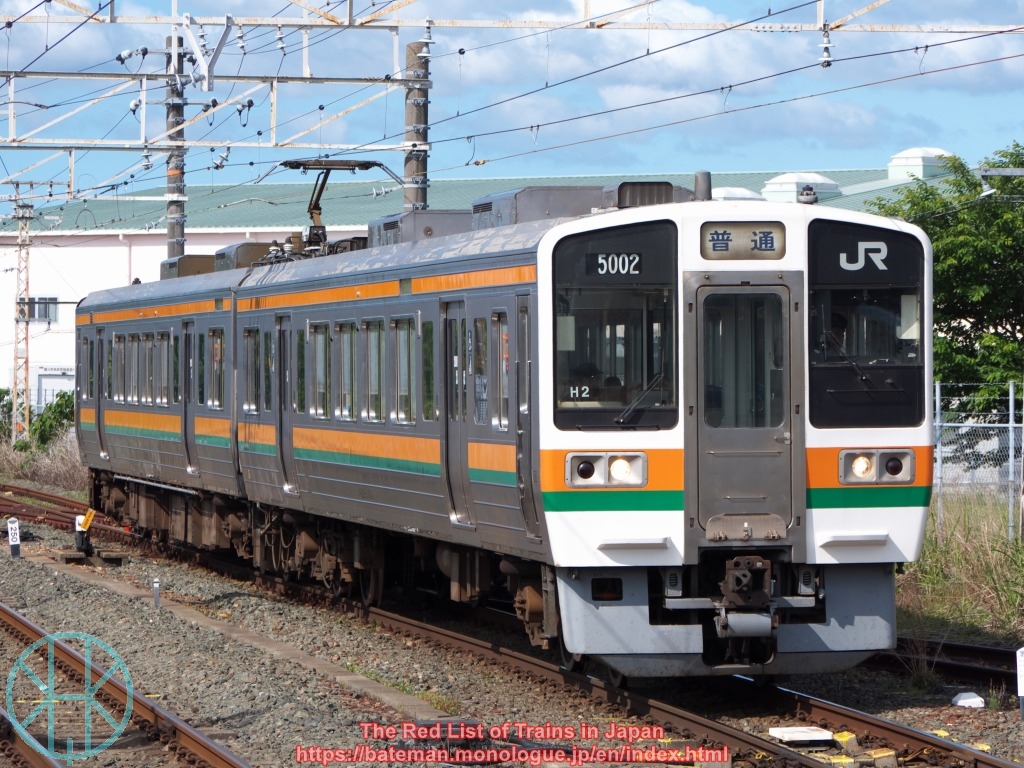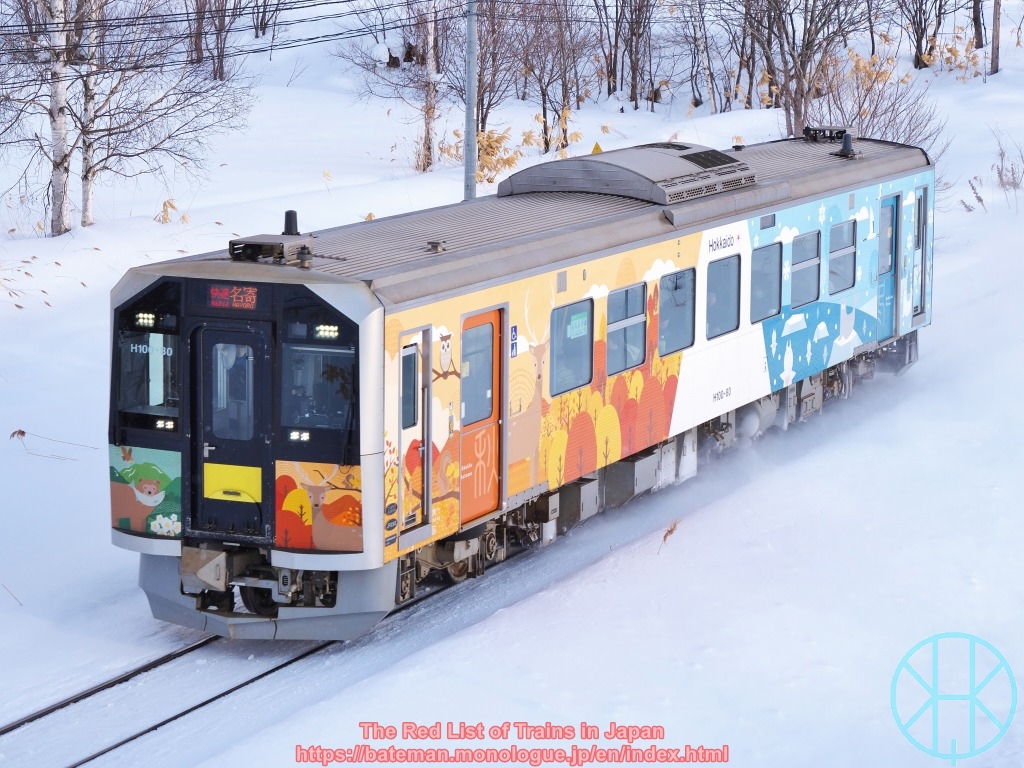As this blog described before, the Japanese Government and railway companies have been discussing about the fate of rural railways that run sparsely populated areas. Most of such railways were constructed before the Second World War, mainly for freight trains transporting coal or wood. They were designed for light freight trains running at slow speed so that they became outdated after the War. Hence, the central and local governments constructed well-maintained roads that connect towns and villages far shorter than those railways. As a result, they have not been used by local residents for nearly or even more than half a century.
On Tuesday 13 February 2024, I visited two railways in western Japan that are placed on top of the "endangered railways" list: Geibi and Kisuki lines. They are two least used railways that JR West has been operating. Here is what I thought about them with a few photos.
Geibi line
Geibi line is a 160 km (100 miles) long railway that connects Bitchu-Kojiro station in Okayama Prefecture and Hiroshima station. The line from Hiroshima to Shimo-Fukawa has been heavily used by commuters and students, while that between Bingo-Ochiai and Tojo is miserable as there are less than 20 passengers a day. According to statistics, it costs approximately 25,000 yen to earn a revenue of 100 yen there.
The line starts from Bitchu-Kojiro, but all services are extended to Niimi station, which is close to the city centre. Niimi is an interchange station with two more lines available: Hakubi line towards Okayama or Yonago (de facto main line) and Kishin line towards Tsuyama (another rural railway). There are six Geibi line services but three of them terminate at Tojo, so there are only three trains a day between Tojo and Bingo-Ochiai.
The service 443D to Bingo-Ochiai departed Niimi at 1 pm with just five passengers in total: three railway enthusiasts including me, a high-school girl and an elderly woman. The latter two alighted from the train within 20 minutes, and another elderly man came in to the train and left at Tojo. The train ran in the middle of nowhere with no other local resident onboard.
Rural railways in western Japan are sluggish as JR West has imposed extremely slow speed limits on curves, tunnels and bridges. They were due to minimise the maintenance cost, and the 25 km/h (15.5 mph) restrictions are lowered to 15 km/h (9 mph) when raining or snowing. However, even if there had been no such limits, trains would not have been fast enough to win a race against cars.
The train entered into Hiroshima Prefecture just before arriving at Tojo station, which is one of few major stations but only has eight users per day. I must say that I could not find anything particularly interesting there, but there was one thing that attracted me 20 minutes later at Uchina station. It seemed that a volunteer sometimes decorated the station with lovely flowers on the pole. It was said to be "heavily" used by local residents back in the 1980s…though merely around 10 people a day then.

The train arrived at Bingo-Ochiai, probably the least busiest interchange station in Japan. All Geibi line services in this area start from or terminate at here so that all passengers have to change trains. Kisuki line also branches off. It was once a bustling station as steam trains had to be refilled. According to a pamphlet, there were restaurants and even a ski resort near the station. It sharply declined when all steam trains were replaced with diesel ones in 1971, and there are only a handful buildings in the area today.
Kisuki line
Kisuki line is 82 km (51 miles) long and connects Bingo-Ochiai and Shinji. Actual distance between these stations is less than 48 km (30 miles), but the railway is longer than that as it locates in and between mountains. In spite of lengthy route and low speed, the line was served by a few express services that connected Hiroshima and Matsue until 1990, but they were completely superseded by buses on a motorway. There were only four passengers including me when the service 1462D left Bingo-Ochiai, and all of them must be railway enthusiasts. Probably it was the busiest among just three services on that day.

As soon as the train left Bingo-Ochiai, phone signals went out. The train ran slowly so that it took more than 10 minutes between stations. There was "Okuizumo Orochi Loop" between Miinohara and Izumo-Sakane. The National Route 314 has such a spiral loop to climb a mountain, while Kisuki line goes further east to do so. Cars were running at 60 km/h (obviously exceeding the speed limit) while the train ran at 25 km/h.
Kisuki line is often closed in winter. Not only Hokkaido and Tohoku region but also part of Chugoku region is prone to heavy snow. Fortunately, there was little snow as it was warmer than usual, but warm temperature in winter sometimes causes another problem: avalanche.
Kisuki line has a zig zag near Izumo-Sakane station. The train reversed twice before arriving at the station so that it took 17 minutes from Miinohara. As mentioned above, smartphones are mostly "no service" in the area so that anyone visiting the line should download a map in advance.
Approaching Izumo-Sakane. There is a spring next to a station building and it is called "water of longevity" (延命水, enmei sui). There is a myth that a racoon dog that lived for more than 100 years loved this water. It has been certified by the authorities and anyone can drink it, but I could not do so as the train stopped only for three minutes.
The train reached to the civilisation. Kisuki is the largest intermediate station on the line that locates near the city centre of Unnan. There are vending machines and a supermarket in front of the station. There are 11 services a day towards Shinji, so it now sounds like a normal rural railway. There were around 15 passengers in total as the train went towards Shinji, where the train terminated.
The three-hour journey on Kisuki line finally came to an end. All passengers including me looked for San'in line service to Yonago, which departed shortly after the Kisuki line train's arrival. Even with extremely small number of service, it was not difficult to make a trip as train connections were good.
Personal views
I enjoyed the trip, but I also found neither lines could survive. There were only a handful of passengers on both trains, all of which were railway enthusiasts. There was literally no local resident near Bingo-Ochiai station, and it clearly shows that the railways have already fulfilled its role decades ago.
Many people blame ageing society and depopulation for the permanent closure of rural railways, but it is not always correct. Even with lots of young people, the railway would not have been used as those railways are far longer than roads. The railways were constructed when civil engineering was not developed enough, while roads were constructed with the latest technology. These railways are simply obsolete and susceptible to natural disaster, and I must concede that nothing can justify these railways. Safety, reliability, speed, comfortability and eco-friendliness…road transportation prevails the railways in all terms.
Some activists may argue that trains are always greener than cars, but it is simply wrong. Maintaining those railways require far more budget, resources and energy than keeping roads nearby available. Buses and taxi services will certainly be far more beneficial than trains for people living in this area. As elderly people have been struggling to drive a car, local governments should concentrate on alternative transports and delivery services as soon as possible rather than sticking to railways that no one uses.
Itinerary
The table below shows how did the journey go on. I stayed at a hotel in Yonago so that my entire trip was like a large circle. I had another business in Neu, so ignore the first two lines.
| Yonago | ( 6:08) | → | Neu | ( 6:33) |
| Neu | (11:53) | → | Niimi | (12:35) |
| Niimi | (13:02) | → | Bingo-Ochiai | (14:28) |
| Bingo-Ochiai | (14:43) | → | Shinji | (17:38) |
| Shinji | (17:44) | → | Yonago | (18:41) |
Those who plan to do a similar trip should carefully check timetables as some services do not run on certain days due to planned engineering work. It is also highly recommended to buy sufficient amount of water and food before getting on a train (there are two convenience stores near Niimi station). There is no need to worry about a toilet as the rolling stock on these lines has one.

























































